Small round black lacquered box with maki-e peacock feathers and mother-of-pearl inlays
- maki-e gold lacquer and mother-of-pearl
Description
The circular cover decorated with two overlapping peacock feathers in takamaki-e, the eyespots inlaid with mother-of-pearl raden. Inside the box and cover, hiramaki-e butterflies and flowers on a background of nashiji lacquer.
The beauty of Japanese lacquers makes them appreciate not only in their country but also in the West. The Europeans discover them at the end of the 16th century through the first missionaries and Portuguese merchants. Throughout the 17th and 18th centuries, Japanese lacquers were to be the subject of a profitable trade. The amateurs of the 18th century Europe loved it, praising the extreme delicacy, refinement and preciousness of these productions. The great aristocrats assiduously collected Japanese lacquerware, like Madame de Pompadour or Queen Marie Antoinette.
Small round black lacquered box with maki-e peacock feathers and mother-of-pearl inlays
- maki-e gold lacquer and mother-of-pearl
Discover more Lacquer
Return to the collection
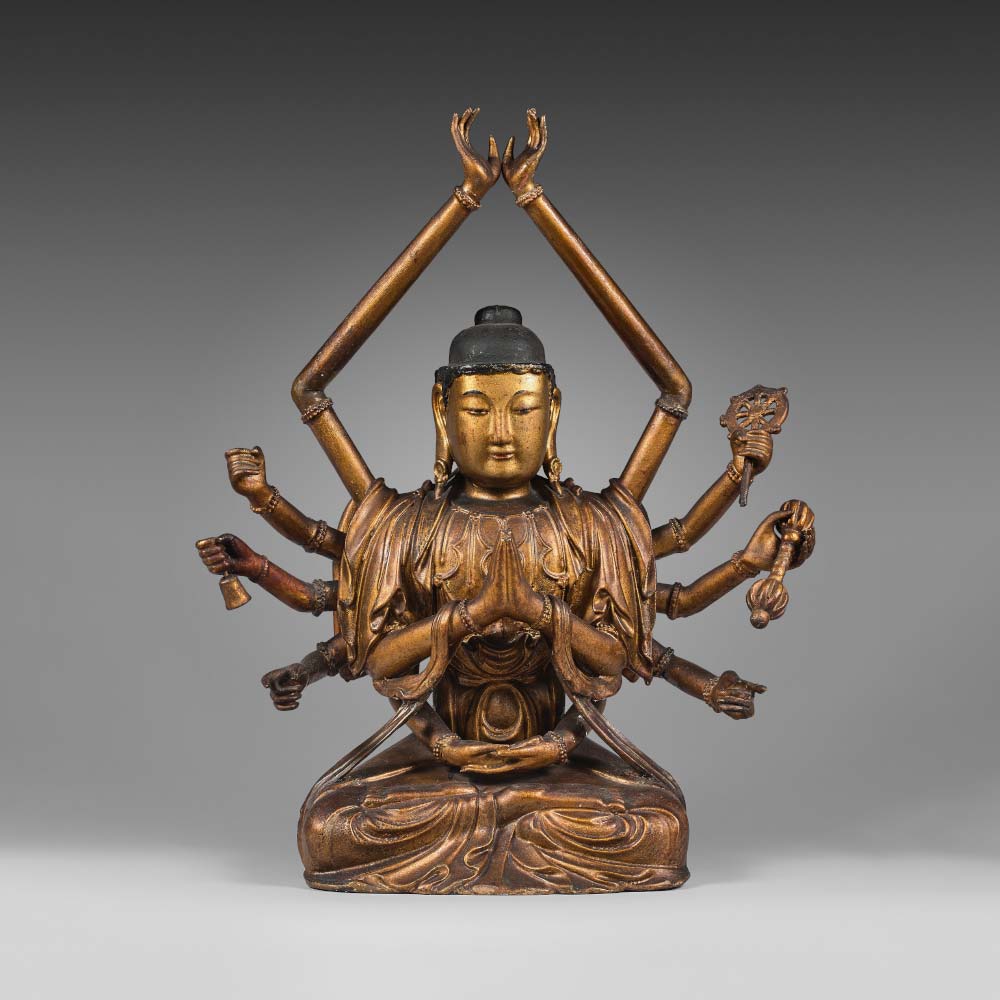

A twelve–armed Avalokiteshvara figure
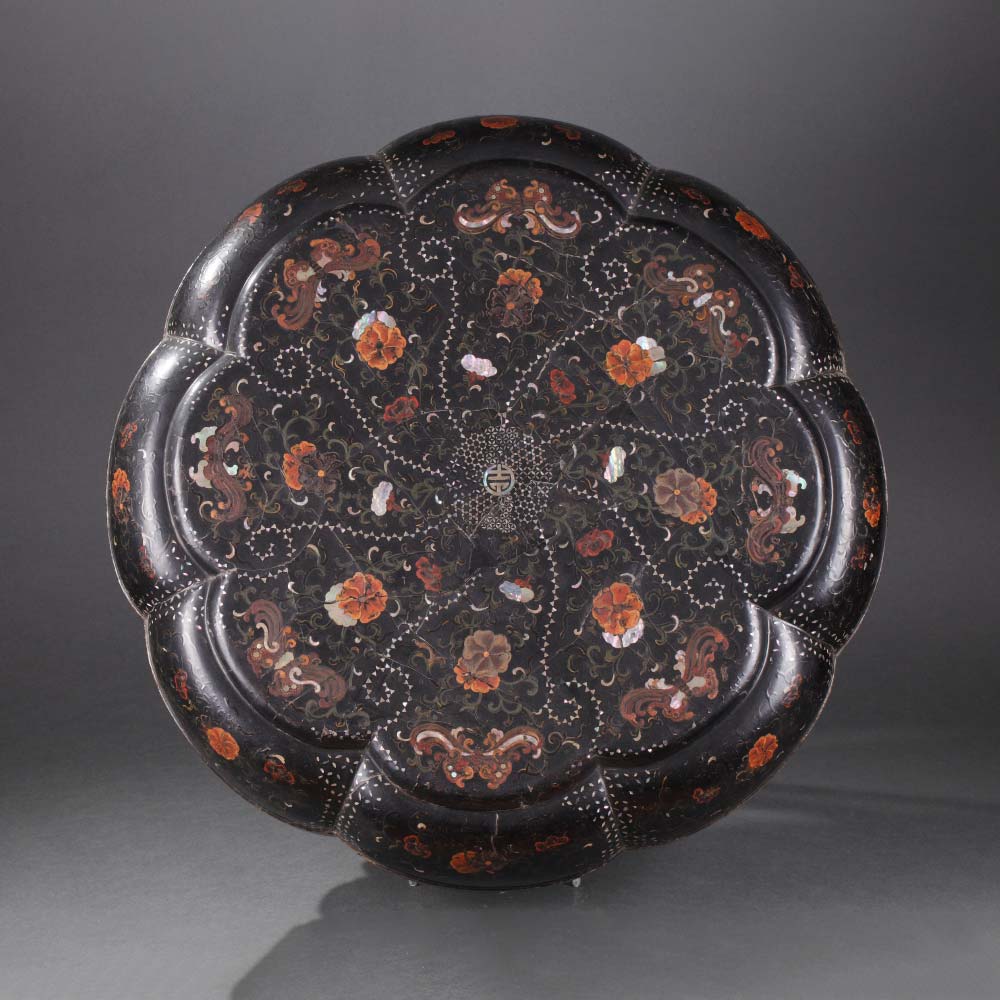
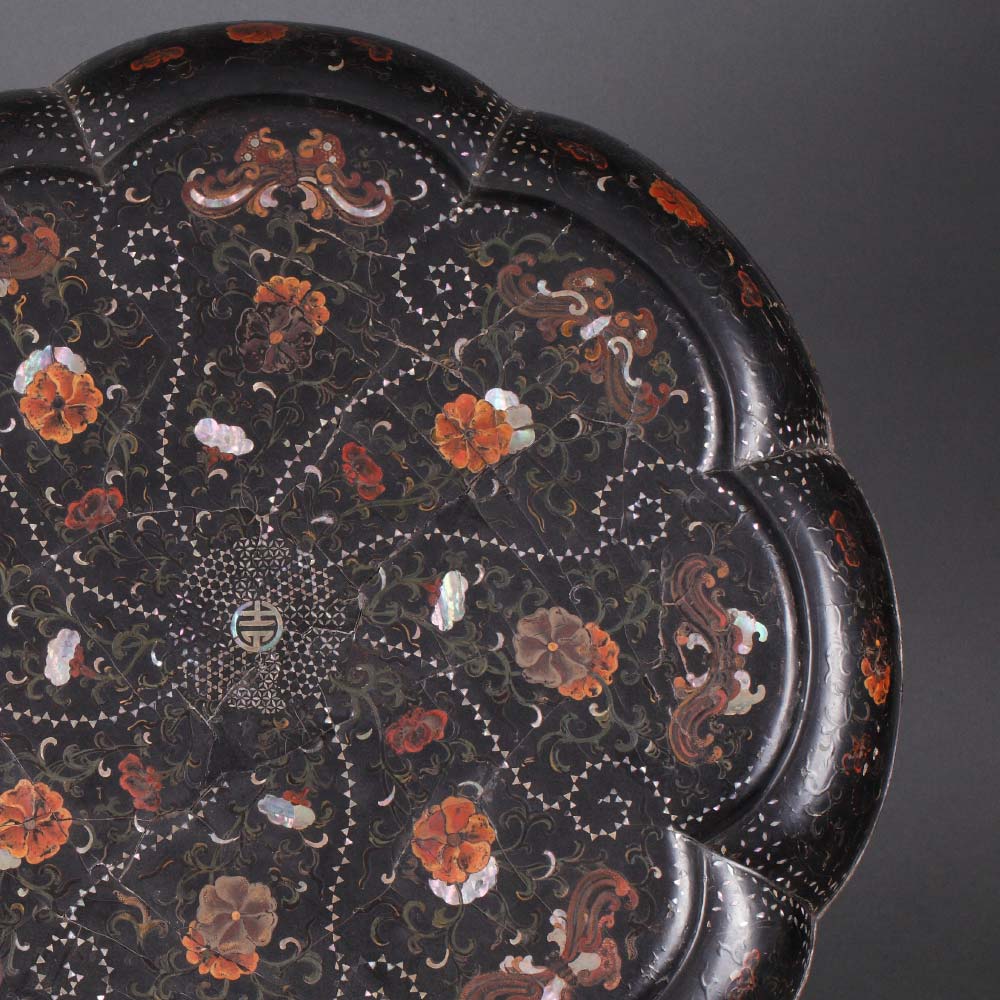
An important inlaid black lacquer marriage box decorated with butterflies and flower scrolls
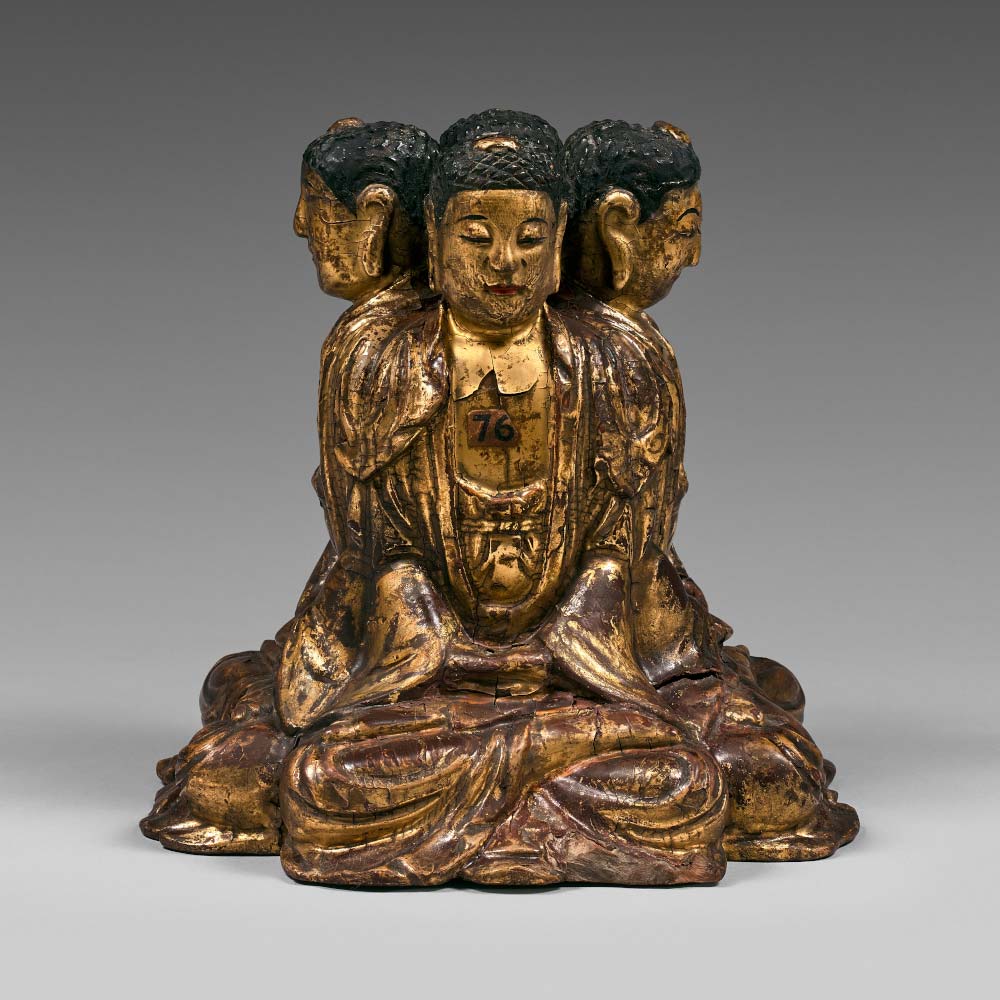
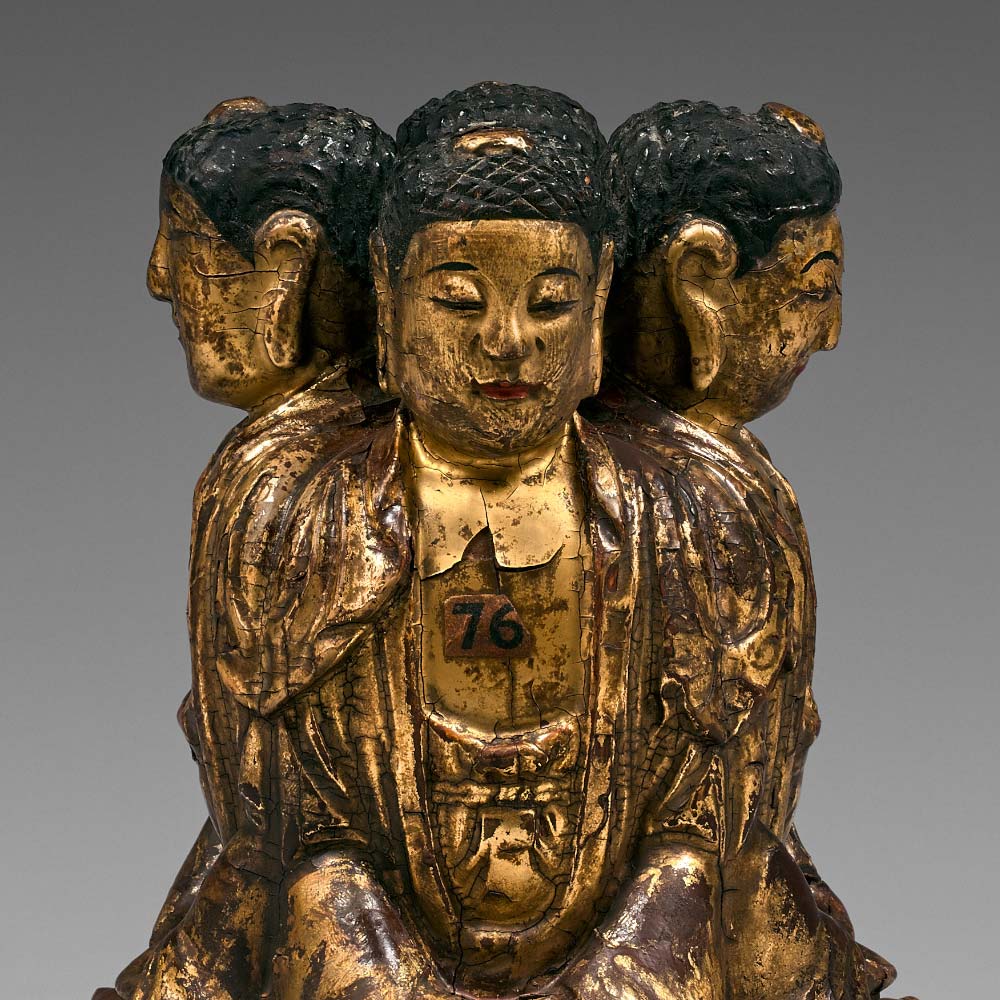
A rare group of four gilt-lacquered buddhas

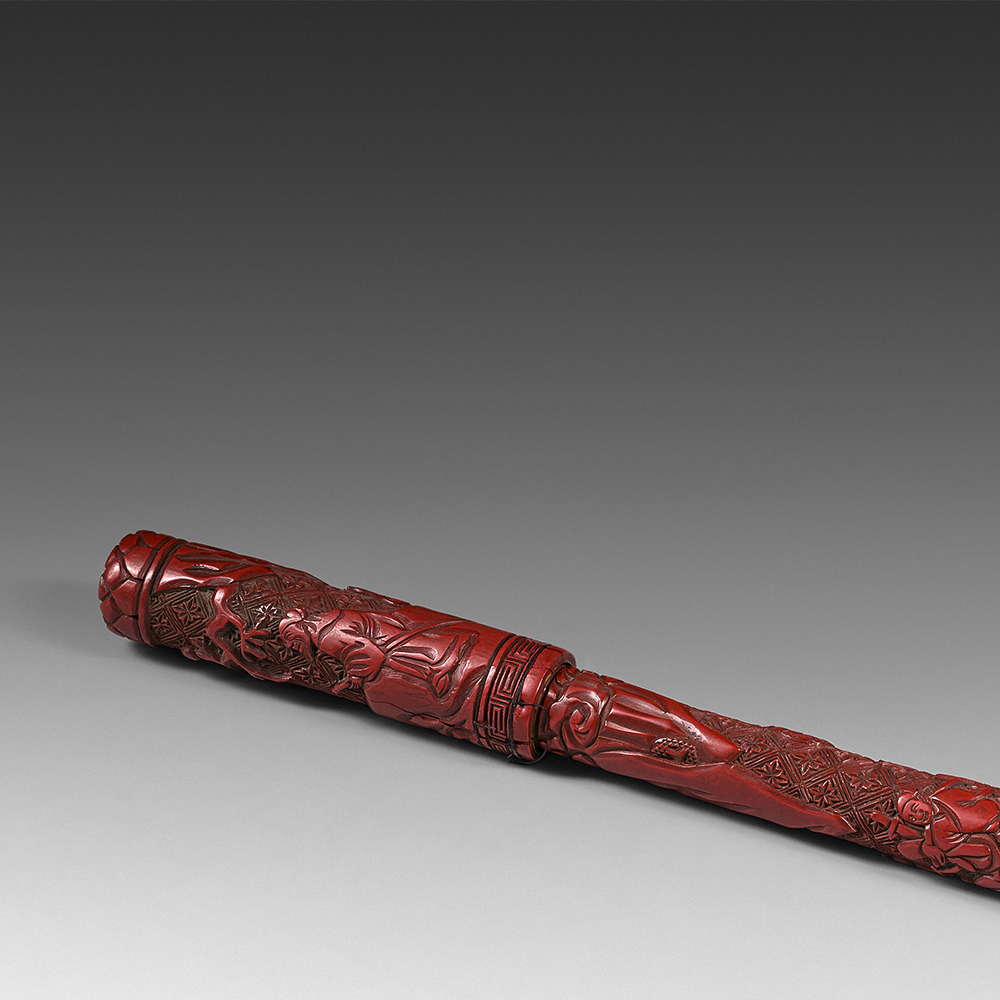
A carved red lacquer brush and cover depicting characters in a rocky landscape
















